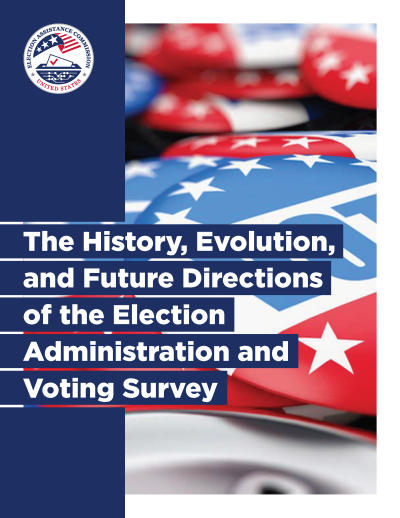“The History, Evolution, and Future Directions of the Election Administration and Voting Survey” report shows how the Election Administration and Voting Survey (EAVS) has emerged as the most comprehensive source of data on U.S. elections.
Read the Report
The EAVS and Policy Survey cover all 50 states, the District of Columbia, and five U.S. territories. Since the EAVS data project was established in 2004, it has significantly contributed to the enhancement of election administration practices across the nation. Because most election management activities take place at the local level, the EAVS yields important insights that are unavailable through other data sources.
The report explains:
- The reasons for EAVS data collection
- Changes in survey questions and data collection methods over time
- Uses of the EAVS project data, and
- Prospects for the EAVS
EAVS Comprehensive Time Series Data Files (2004 – 2022)
To increase the usability of the data, the EAC has published comprehensive time series data files that include data from 2004 to 2022 for the EAVS and its companion survey, the Policy Survey. Previously, these datasets had been available for only one election at a time, which made it difficult to track election trends.
The time series data files allow users to better explore election changes and understand how election administration in the United States has evolved. The year-specific EAVS project data files provide a snapshot of each individual election, and the time series data files show the story of election administration over time.
EAVS Time Series Dataset (Sections A-F)
EAVS Section A: Voter Registration Time Series
EAVS Section B: The Uniformed and Overseas Citizens Absentee Voting Act (UOCAVA) Time Series
EAVS Section C: Mail Voting Time Series
EAVS Section D: In-Person Polling Operations Time Series
EAVS Section E: Provisional Ballots Time Series
EAVS Section F: Voter Participation and Election Technologies Time Series


